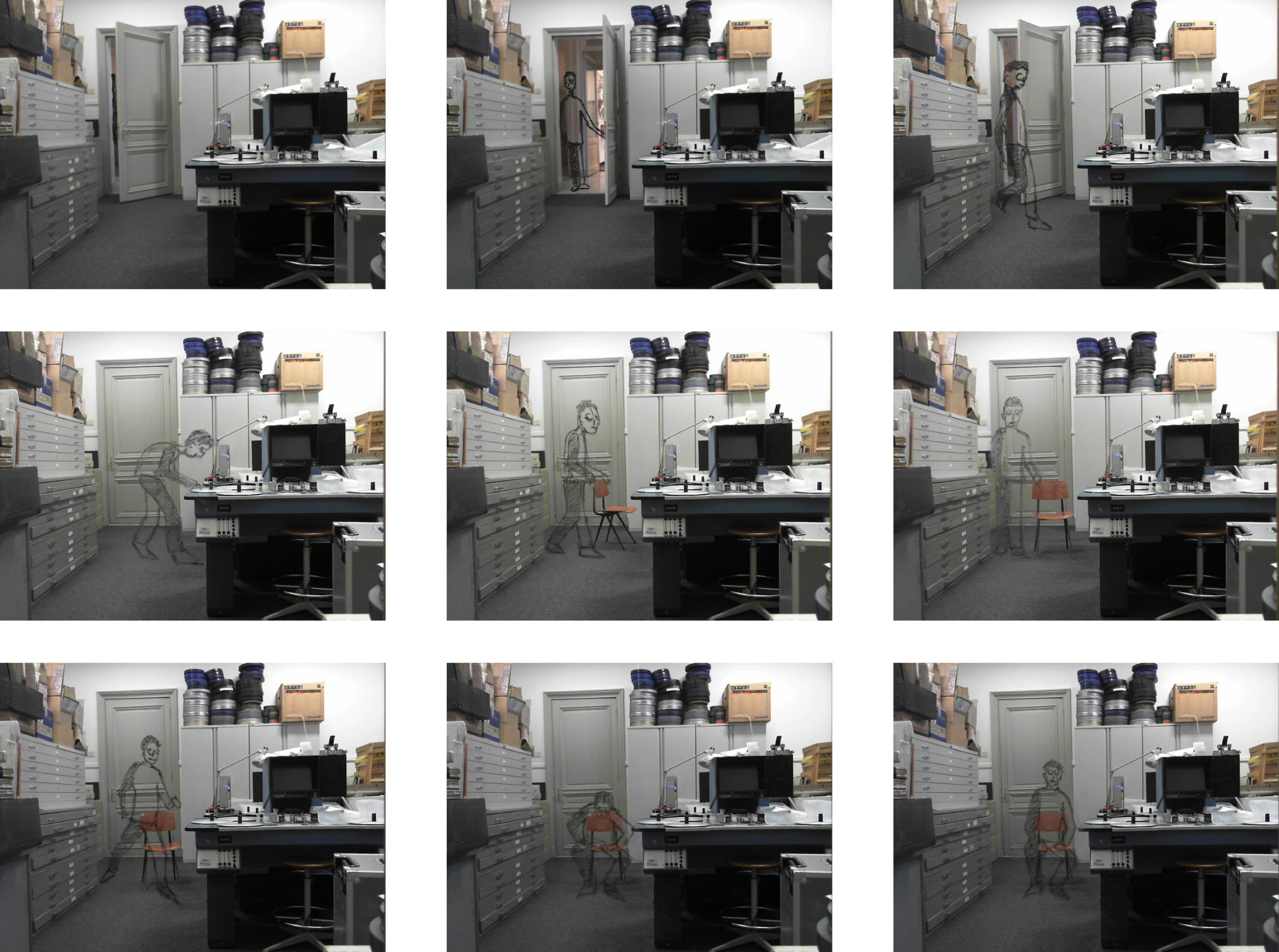User:Loes van Dorp/Thesis synopses outline
Synopses
Updated last:
| 27 | 04 | 12 |
- Synopses
For my graduation project I am planning to make a short stop-motion animation with sound where I will try to visualize how people deal with their memories. This project is a continuation of my last project 'Portrait of an empty house' and I probably will use the same technique.
In Portrait of an empty house I experimented with how to show different times and different worlds in one image. I tried to show how memories define a known space. The space is given this extra layer of the past by using a Plexiglas screen (+/- 140x200 cm) to put a drawn animation upon using oil paint.
You see a girl/woman pushing a big Plexiglas screen around in an almost empty house, while memories appear in form of a drawing on the screen. In the beginning she is actively involved with the drawing, but is more passive in the course of the film, while her white dress gets more black.
The graduation project will be an attempt to portrait how memory is something we always carry with us and how a space can reveal its memories.
It is playing with the unreliable nature of memories and how they are reshaped continually by obtained experience and knowledge.
Due to the fact that a memory of an event is always characterized by previous experiences, two people will never have 'the same' experience.
To create a narrative I will use recordings of my own memories and that of others and mix them together in a way that they will relate, that they refer to each other. How will the memories influence each other? Will it enrich the memory or make it change in an unhappy way? Will there be a visual fight over the accuracy of their memory?
During this project things changed and now I am not sure anymore what form the animation will take. But my first intention was to use the same technique as in 'Portrait of an empty house': Use a space/room/location where a protagonist moves a big Plexiglas screen around. On this screen the memories and thoughts are drawn by the protagonist and functions as a window to another world; to the world of memory and thoughts. The protagonist can influence what is on the screen by pushing/dragging it around in the space. By painting over the drawing and reshaping it he can change the memory or make it disappear. He can also haunt the memory with the screen when it wants to escape.
With this experiment I hope to be able to show a space, colored by personal experience and show a memory from different point of views. I also want to explore the connection of the screen I use and the theories about the 'screen memory'. Screen memory is a memory that is there to replace a memory you do not want to have. But how do I know which of the memories are reliable? Which are the screen memories? Suppressing Memory, False Memory, unconscious insincerity. But suppressed doesn't mean disappeared.
I am interested in the question how to show different times and stories in one image. (-*The real time,
-*The time of reproducing the memory -*The time in the story of the memory)
I want to play with the drawing and its place in the space. I want it to interact with the space to make the connection between the real and unreal. I made a study where I let a drawing on glass interact with the real space.
File:Stills masterclass project.jpg I will tell more about this study later in this Thesis.
When using stop-motion to record the real world, only a fraction of the real-time is made visible. Shooting real persons and real space this way will give something surreal and unreal to the motion, because of the missing parts of the real movement, the movements/changes you see are very rigid. This makes for me the connection to forgetting and memory. You never remember everything, you always remember small parts.
Our memory is dominated by 'forgetting'. The absence of forgetting will not define a better memory, but results in increasing confusion. You have to have a filter to make memories make sense and usable for the future. An affected memory is still a memory, but not anymore to what the original memory was. Therefore this is also a form of forgetting.
This project is about things you want to remember, but somehow forget and things you want to forget but still remember.

